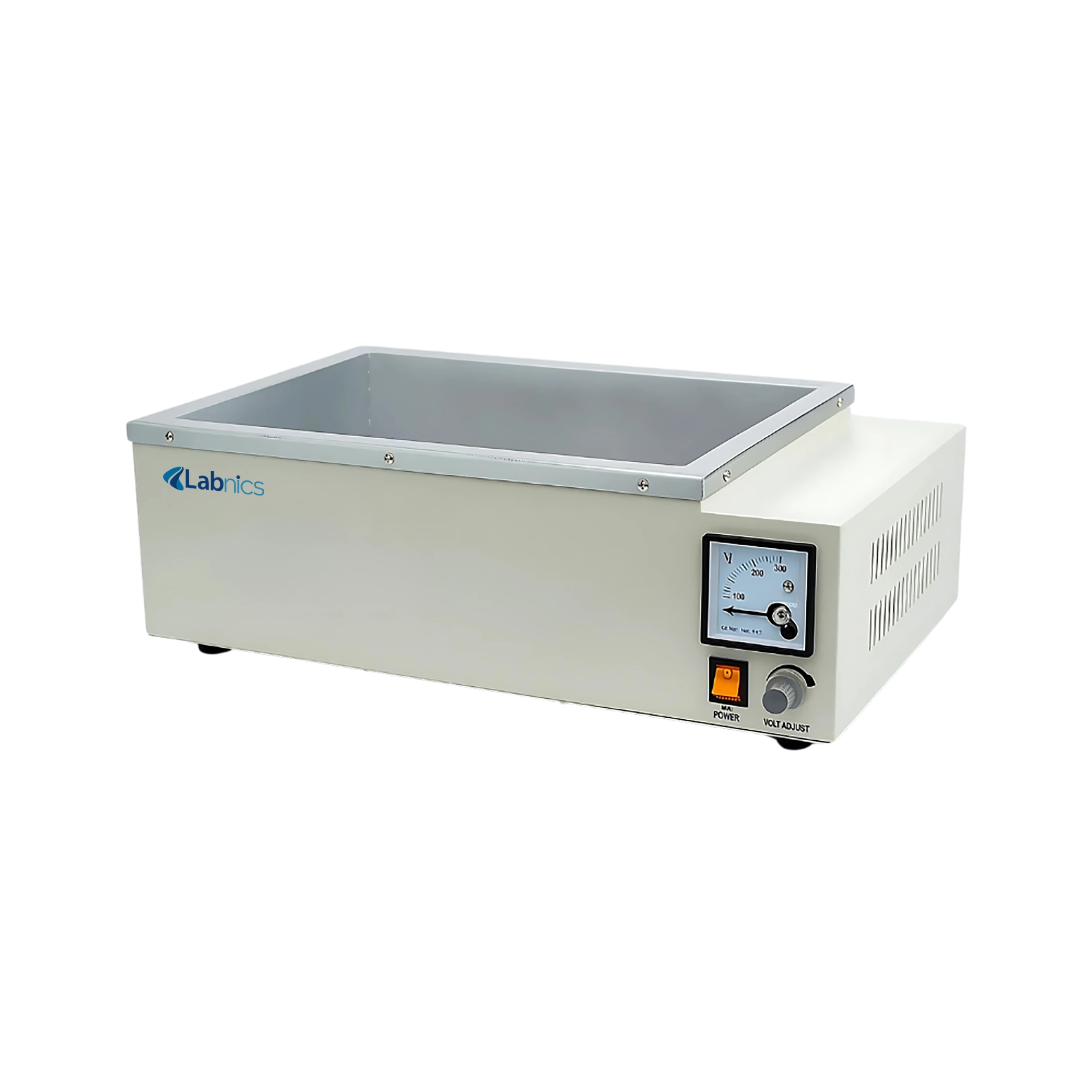Sand Bath NSDB-100 made of high-grade cast steel offers superior durability and even heat distribution for laboratory applications. It is designed to withstand extreme temperatures up to 400ºC, ensures consistent thermal performance. Our unit has smooth surface allowing easy cleaning and maintenance. This unitdoesn’t undergo deformation or corrosion and can adjust speed sleeplessly without preset speed levels. Our unit is perfect for precise heating without direct flame contact.
FAQ for Sand Bath NSDB-100
1: What is a Sand Bath NSDB-100?
Sand Bath NSDB-100 is a heating device filled with sand, used to evenly distribute heat to containers like flasks or test tubes during experiments. It is commonly used in chemical synthesis, pharmaceutical research, and material testing.
2: How does Sand Bath NSDB-100 work in the lab?
Sand Bath NSDB-100 is heated, usually by an electric or hot plate source, and it transfers heat gently and uniformly to the sample containers placed in it, preventing direct flame contact.
3: What are the advantages of using Sand Bath NSDB-100?
Sand Bath NSDB-100 provide controlled, even heating and reduce the risk of overheating or damaging sensitive samples compared to direct flame heating.
4: What types of experiments use Sand Bath NSDB-100?
They Sand Bath NSDB-100 is commonly used in organic synthesis, evaporation, distillation, and reactions that require stable, indirect heating. Its durable, corrosion-resistant design ensures long-lasting performance and safety during experiments.
5: How is the temperature controlled in Sand Bath NSDB-100?
Temperature is typically controlled by adjusting the heat source beneath the sand and the temperature regulating knob or using a thermostat integrated with the heating device.
6: What are sand baths used for in laboratories?
Sand baths are used to provide uniform and controlled heating for multiple lab applications, such as distillations, evaporations, and reflux reactions.
7: How do sand baths work?
Sand baths work by heating sand inside a container, which will then evenly distributes heat to glassware placed within. They ensure consistent and safe thermal conduction.
8: What temperature ranges can sand baths achieve?
Most sand baths can reach temperatures from room temperature up to 400°C. They offer precise control for various laboratory procedures.
9: Are sand baths safer than direct flame heating methods?
Yes, sand baths are considered safer because they offer indirect and stable heating, reducing the risk of glassware damage and uneven heat exposure.

